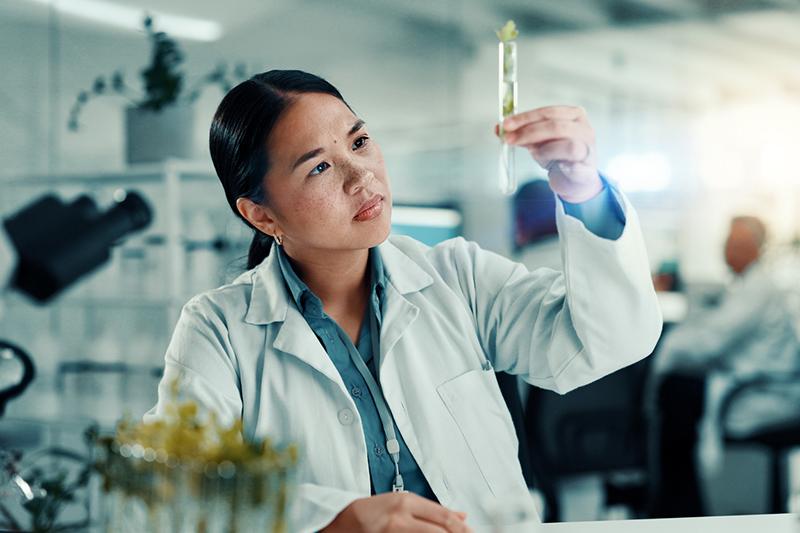Research impact is a key priority for Australian and New Zealand universities, especially at a time of rapid change and funding pressures. We need to showcase how our academic research is translating into real-world benefits in order to remain relevant, connected and engaged with industry, governments, our funders and our communities.
Australasian universities enjoy a relatively high level of public trust, but this can’t be taken for granted. By demonstrating the tangible value of university-led research and leading innovation through co-designed projects, universities can grow and maintain this trust.
From climate adaptation and public health measures to developing AI tools that monitor the risks of flooding or volcanic eruptions, research excellence has huge potential benefits for the safety, quality of life and economic well-being of our communities.
The challenge facing Australian and New Zealand universities is how to share this impact with as wide an audience as possible to boost public trust and support. This is building social licence.
See research impact as a team sport
Universities bring together skills and competences across multiple disciplines – rarely seen together in any other organisations – to answer global challenges. Social sciences and humanities research is just as important as work carried out across science, engineering and technology when it comes to innovation and impact. Anything that involves humans and changing human behaviour needs strategy and input from the social sciences to move forward; improved technologies are only beneficial if people use them and use them well.
- Resource collection: Shaping the future of universities – a New Zealand perspective
- More articles from Australia and New Zealand
- Spotlight guide: An academics’ guide to policy impact
For example, when it comes to climate change research, scientists can provide evidence of the physical impacts of a warming planet, but we need social scientists on board to understand people’s attitudes and behaviour and develop strategies for community engagement.
Embed co-design from the start
For research to make a real-world difference, we need to first ask: “What are the most pressing issues for business, for industry, for society and for the environment?” And then: “How can we help to address those issues?”
University researchers are expert collaborators, and we need to ensure they are working with partner organisations – including iwi and Indigenous groups, not-for-profits and industry – from the inception of a project through to its completion and beyond.
Engaging with these organisations early allows them to contribute to the setting of research agendas, maximising impact.
At the University of Canterbury, research from the Faculty of Science in partnership with a local private company, New Zealand councils, government agencies and public research organisations has delivered numerous projects using lidar (shorthand for light detection and ranging) technology to conduct aerial laser surveys of landscape features, such as glaciers and river systems, including work to map the environmental impact of extreme weather events, improve flood modelling, and monitor risks to infrastructure, such as powerlines. The team is collaborating with local iwi in Hawke’s Bay to forecast the impacts of future storms and help strengthen preparedness for climate-related risks.
In another example, Griffith University in Queensland, which is part of Australia’s Innovative Research Universities (IRU) group, has worked closely with local government and non-government and community organisations on a series of coastal climate-adaptation projects. Griffith academics worked from the ground up, investigating climate change impacts on communities and cities, and building a process by which everyone could contribute to adaptation futures. The initiative has led to transformative community-based approaches to delivering climate-resilient water, energy and waste systems.
It’s important to support academic staff to develop partner relationships, but we could go a step further. For example, supporting academic staff to undertake internships with policymakers and vice-versa would help each gain experience and understand how they can best work together to produce timely evidence-based policies.
Recognise social impact as equal to commercial impact
While recognising the economic benefits of university research, it must be noted that social and environmental benefits are equally important. We need to consider how a wide range of communities will benefit from what we do, as well as keeping an eye on equity and who might be missing out.
We risk losing public trust when we talk only about economic measures; positive research impact also includes social, cultural, environmental, and health and well-being benefits.
The group of seven Australian universities in the IRU network were founded to expand access to higher education and to bring the benefits of research and innovation to more communities.
Research quality and productivity has grown strongly in younger universities, according to IRU analysis, with collaboration between the IRU universities and industry partners growing by more 260 per cent over the past decade. At the same time, the IRU universities have also maintained strong collaboration with partners in the public and community sectors. In New Zealand, university publications with industry and with government have each risen by 130 per cent over the past decade, as SciVal data shows.
Think beyond publications
The benefits of research clearly don’t end with academic publication, but spill over into what comes next – the outcomes (including future work) of research. As public universities, we must bring the public – our key stakeholder – on this research journey, making our work accessible and engaging, and demonstrating impact.
The ability to know your audience, and to tell the story about a research project and how it will be applied are skills we should support all our researchers to develop, so they can play a bigger knowledge-broker and engagement role.
A great example of research being put in the public eye is the Life of a CBRn project last year. The University of Canberra created a nine-metre installation at the Canberra Centre highlighting how the university’s research impacted the life of a typical Canberra resident across life stages: from improving midwifery services at birth, to transport, cleaning up waterways and aged-care nursing.
This storytelling approach, which included researcher drop-in sessions and interactive activities for children, gathered a positive response from the community, with many people reporting that their eyes had been opened to this relevant research and where it came from.
Research impact must not be an abstract idea
We can’t afford to keep research impact in the abstract. Our institutions, communications and the future of our funding models depend on showing how our work delivers benefits that span health, the economy, culture, public policy and the environment.
We need to support our research staff by ensuring they have the facilities, the infrastructure, and the time to undertake their work. Researchers also need the skills that enable them to communicate their research effectively, engage with stakeholders, and understand the requirements of their end users.
There is a role for universities, and for research funding agencies, that goes beyond evaluating and measuring impacts that have already happened to supporting and incentivising collaboration to drive impact into the future.
Lucy Johnston is deputy vice-chancellor for research and innovation at the University of Canterbury | Te Whare Wānanga o Waitaha. Gill Jolly is a volcanologist and chief science adviser in the New Zealand Ministry of Business Innovation and Employment (MBIE). Paul Harris is executive director of Innovative Research Universities (IRU) network, based in Canberra, Australia.
The authors were part of the panel discussion “Enhancing and evidencing research impact to strengthen universities’ social licence” during THE Campus Live ANZ event on 2-3 September 2025 at the University of Canterbury.
If you would like advice and insight from academics and university staff delivered direct to your inbox each week, sign up for the Campus newsletter.




comment